How bad was the July US jobs reports?
The July US non-farm payrolls report showed employment growth slowed sharply over the past 3-months, with just 73,000 net jobs added in July, while the figures for May and June were revised down by a combined 258,000 – an unusually large revision by the US Bureau of Labor Statistics1.
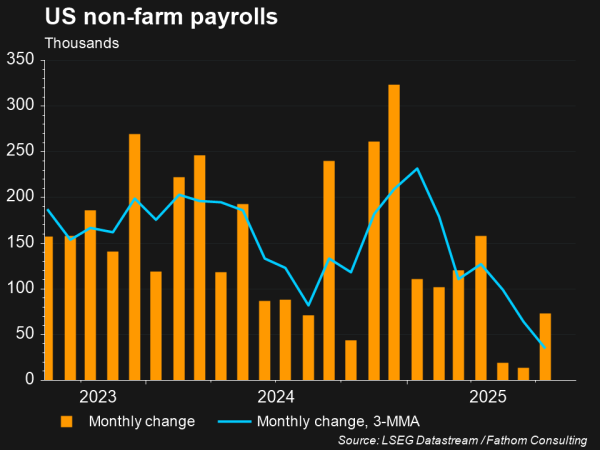
The overall 106,000 jobs now created from May to July marks a sharp decline from the 380,000 added in the prior 3-months. President Trump responded to the news by firing the head of the Bureau of Labor Statistics, Erika McEntarfer, saying on social media the data revisions were “RIGGED in order to make the Republicans, and ME, look bad,” without presenting any evidence2.
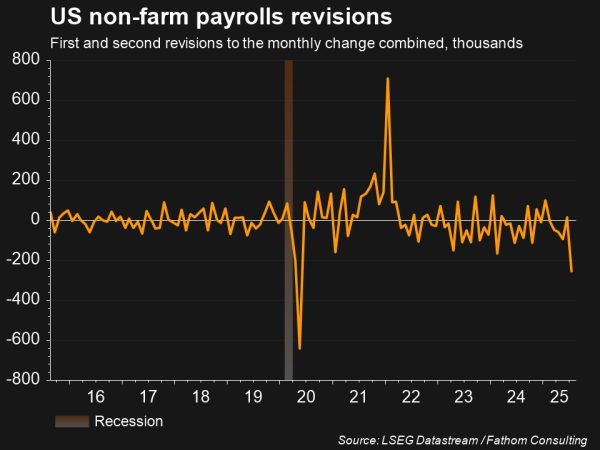
Ironically, though, the sector that dragged down the net statistics and lost the most jobs over the period was government, as Trump’s cost-cutting initiatives saw thousands of government employees let go, and new employee hiring slowed3.
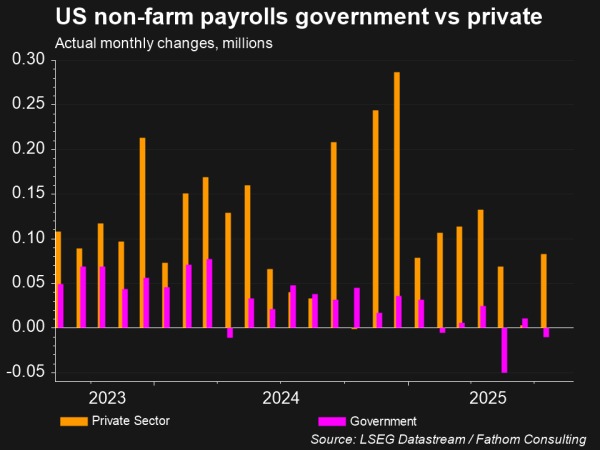
Excluding these cuts, private sector job creation was broadly flat like it has been all year, with cyclical sectors like construction and hospitality adding minimal new workers, as they grapple with the uncertainty of Trump’s tariffs.
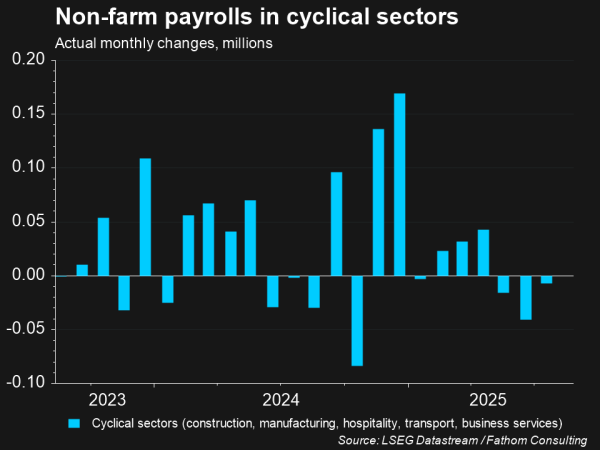
This left the overall unemployment rate up slightly to 4.2% from 4.1%, still near historical lows, but exhibiting an upward trend. It remains to be seen whether this upward trend will accelerate, and the effect Trump’s tariffs will have, but to-date, corporate profits appear broadly unaffected. Quarter 2 US earnings season is currently underway, with the S&P500 having posted strong profit growth to-date, dragged up by large gains for tech companies, who have benefitted from AI-demand, and financials, who have benefitted from rising markets and volatility. This has, however, masked more sober growth in cyclical sectors like consumer discretionary and materials, which have reported more subdued growth to date – perhaps beginning to show the impact of the economy’s weaker employment data hitting consumer spending.
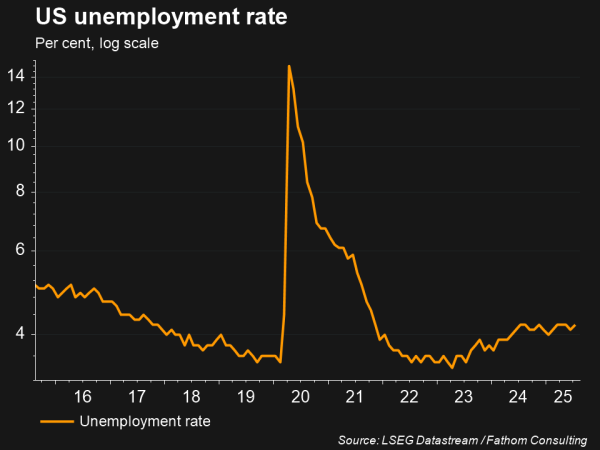
What does it mean for the Fed?
Trump blasted Federal Reserve chair Jerome Powell on social media following the release of the jobs report, saying “Too Little, Too Late. Jerome ‘Too Late’ Powell is a disaster. DROP THE RATE!”. The president has long called on Powell to cut rates, with Powell consistently responding that the central bank needs to wait and see the effects of tariffs on inflation before cutting, and subsequently holding rates steady at 4.25-4.5% at the Fed’s latest meeting in July.
Investors now believe, though, that July’s sobering jobs data will force Powell’s hand, compelling him to cut rates at the central bank’s next meeting in September, to avoid a sharper employment downturn. They argue this would be in-line with the Fed’s dual mandate to support stable prices and maximum sustainable employment, as rate cuts prop-up consumer spending and reduce the risk of a further hiring slowdown. Short-dated yields have fallen significantly following the jobs report, as investors price in the Fed cutting rates at its September meeting.
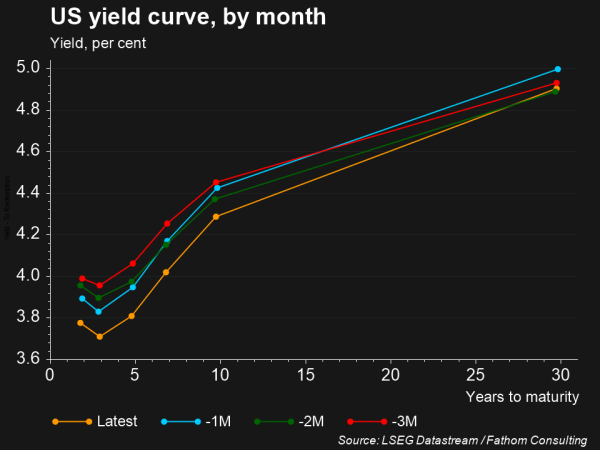
It remains uncertain, however, whether the Fed will cut rates at any of its other remaining meetings this year, with the central bank still needing to see how Trump’s tariffs flow through to inflation data, and whether unemployment begins to meaningfully pick-up following July’s weaker hiring activity.
References
- Financial Times, “US labour market suffered sharp slowdown over past three months,” 1 August 2025
- Financial Times, “Donald Trump fires US labour statistics boss after weak jobs report,” 2 August 2025
- Financial Times, “How bad was the US jobs report,” 4 August 2025
